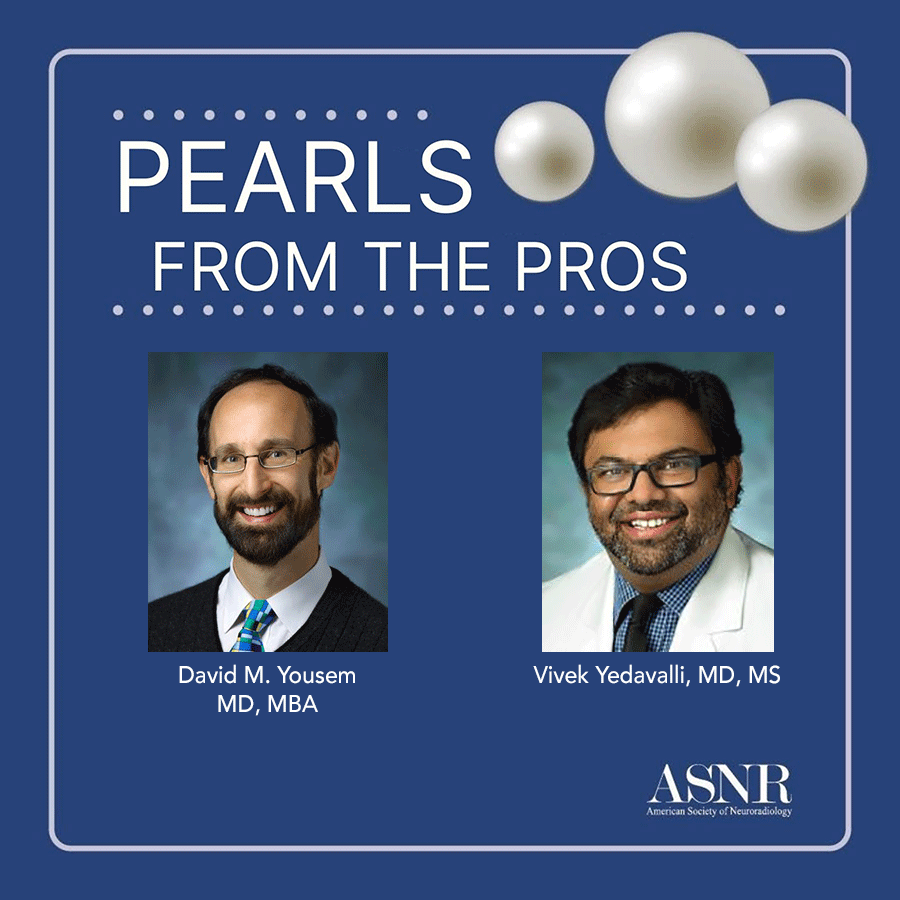Dr. David Yousem Interviewed by Dr. Vivek Yedavalli

David Yousem, MD, MBA is a world renowned neuroradiologist who served as the Past President of ASNR in 2007-08. He is currently a Professor of Radiology and also serves as the Vice Chairman of Faculty Development in the Department of Radiology and Radiological Sciences and Associate Dean of Professional Development at the Johns Hopkins University School of Medicine. Dr. Yousem is a prolific researcher and clinical educator, having mentored several faculty and hundreds of trainees throughout his highly accomplished career. I recently interviewed Dr. Yousem on his advice for junior faculty in regard to transitioning into practice. Many thanks to Dr. Yousem for taking the time and sharing his wisdom.
What are some of the hardest challenges you’ve noticed amongst those starting off in practice after training?
One aspect of the transition that I cannot stress enough is being an outstanding clinical neuroradiologist. Regardless of what environment you are in, being excellent clinically garners your colleagues’ respect and your clinicians’ trust. Starting out, take the extra time on your studies to ensure that they are useful reports by making your impressions succinct and informative while also minimizing typos. Look things up when you are unsure and ask your senior colleagues for their valuable input. This clinical excellence will pay off as you continue in your career whether it be in private or academic practice. Know your stuff!.
As to growing your value, my mantra is “make yourself indispensable”. Many junior neuroradiologists find this process quite challenging. Be the “go to person” for some area of your practice where you are the BEST! In academia, look for ways to complement the other faculty within your division and find your niche. This equally applies to private practice. Consider the needs of the practice and look for ways to not only complement your colleagues but add value. That may be by learning a unique technique like MR neurography or taking business administration classes to help the practice’s efficiency, or going out in community to advocate for the practice or developing extra skills in an interventional procedure. In both academic and private practice, much of this will also be contingent upon what you see a lot of in your clinical practice, which can mold your niche accordingly. If you see a lot of MS, get into neuroimmunology. If you see a lot of back pain, learn to administer selective blocks. There is little value of being the mitochondrial myopathy guy or gal if you only see 3 a year….
What do you recommend focusing on during the first year of clinical practice?
Create “added value” to your division/department or practice. Developing that “something special” may sometimes require additional training. For example, when building a private practice or a new academic program, you may need to gain an expertise in marketing, public speaking, web design, artificial intelligence on patient recruitment.
Developing collaborations with your clinical colleagues is also extremely important, especially in your area of expertise. Sometimes junior faculty worry about not having the necessary time to write manuscripts. I would not worry about that during the first year. Once you develop those collaborations, that will help in your research endeavors later on, especially if they trust your clinical work. I STRONGLY recommend attending tumor boards and multidisciplinary conferences where your visibility and value can be highlighted.
What do you wish you knew when you first transitioned to practice, and what is your advice to others?
Know yourself first and foremost. Looking back at it now, I was initially writing NIH grants when I started as junior faculty in the mid-90s. I had this novel idea of investigating the sequelae of traumatic brain injury in Baltimore City high school football players using DTI in a longitudinal study before the season started, with any concussion, and after the season ended, comparing football players to baseball players. This was well before what we now know about Chronic Traumatic Encephalopathy. DTI was just being implemented and I thought white matter shearing in concussion would be a great application. That grant submission was a long and arduous process that took years of back and forth, often after many rejections. I realized then that the world of grant writing required a higher level of patience and persistence that I did not have. Keep in mind that even if you are fortunate enough to obtain the grants, you may not see the end results of your work for years. You could be collecting data for three to four years, then finally write and publish that premier paper in that specific subfield in year five. The same patience and persistence also apply to acquiring patents for coils or other devices, for instance. I realized early on that this was not who I was. I didn’t think I was good enough at writing these grants and I just didn’t have that patience to improve. I rationalized that I could easily write five to ten papers on my own each year, sometimes even funding myself, in that same timeframe. I never was funded as an NIH Principal Investigator…..ever. So, it is really important to do that introspection and make sure you know who you are, what you’re good at, and what you want out of your career.


